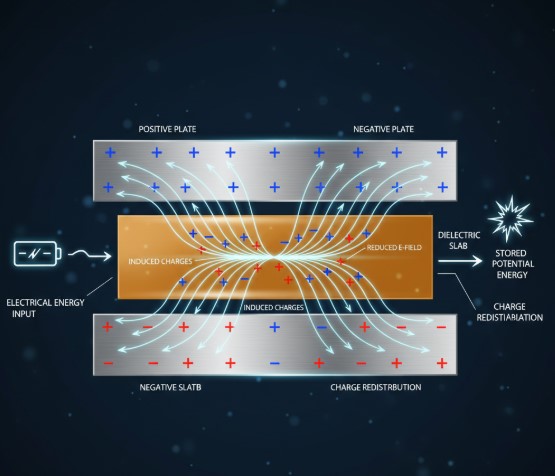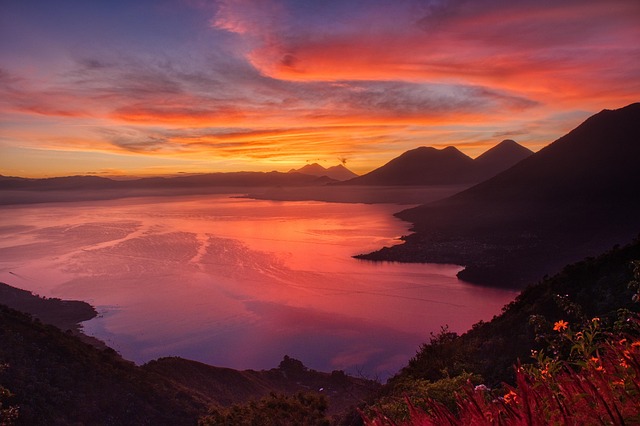Introduction to Gas Giants
Gas giants are a distinct category of planets primarily composed of hydrogen and helium, characterized by their significant size and lack of a solid surface. Unlike terrestrial planets, which are rocky and have well-defined surfaces, gas giants exhibit thick atmospheres filled with gaseous materials. This fundamental difference influences various aspects of their structure, atmosphere, and overall behavior in the solar system.
Within our solar system, Jupiter and Saturn stand out as the two primary representatives of gas giants. Jupiter, the largest planet in our solar system, demonstrates the most prominent features associated with gas giants, including a complex atmosphere with stunning cloud bands, intense storms, and a powerful magnetic field. Saturn, renowned for its impressive ring system, displays similar characteristics but with a unique elegance that captures the fascination of astronomers and enthusiasts alike.
In addition to their atmospheric composition, gas giants differ from ice giants, which are composed of heavier volatile substances, such as water, ammonia, and methane. Ice giants, like Uranus and Neptune, have higher rocky cores and a significantly different atmospheric profile compared to gas giants. This distinction allows researchers and scientists to categorize these planets systematically, facilitating a better understanding of their formation, evolution, and the underlying mechanics of their atmospheres.
Jupiter and Saturn not only provide a critical insight into the nature of gas giants but also help astronomers comprehend the diverse processes at play within planetary systems. By studying these intriguing worlds, scientists can unravel the mysteries surrounding gas giants and their role in the broader context of our universe. The exploration of these planets continues to inspire missions and research, aiming to deepen our understanding of their composition, weather patterns, and potential for hosting moons that may have conditions suitable for life.
Jupiter: The King of the Planets
Jupiter, the largest planet in our solar system, is often referred to as the “King of the Planets” due to its immense size and distinct features. This gas giant has a diameter of about 86,881 miles (139,822 kilometers), making it more than 11 times wider than Earth. Its sheer mass, which is 318 times that of our planet, has profound implications within the solar system. Jupiter’s gravitational field plays a crucial role in influencing the orbits of other celestial bodies, including asteroids and comets, effectively acting as a shield for the inner planets by capturing or redirecting potential threats.
Compositionally, Jupiter is primarily made up of hydrogen and helium, with trace amounts of methane, ammonia, and other gases. This rich atmosphere is characterized by its bands of clouds that exhibit various colors and patterns due to the differential rotation of the planet. Jupiter’s atmosphere is not only beautiful but also dynamic; the planet’s rapid rotation, completing a full turn in just under 10 hours, contributes to the development of powerful storms and tumultuous weather systems. The most notable of these phenomena is the Great Red Spot, a giant storm larger than Earth that has persisted for centuries, showcasing the planet’s atmospheric complexity.
In addition to its atmospheric features, Jupiter boasts an extensive moon system, with at least 79 known satellites. Among these, four large moons—Io, Europa, Ganymede, and Callisto—are known as the Galilean moons, named after their discoverer, Galileo Galilei. Each of these moons has unique characteristics, from Europa’s icy surface potentially harboring an ocean beneath to Io’s active volcanism. Collectively, these aspects illustrate not just Jupiter’s significance in terms of size and composition, but also its role as a dynamic and intriguing component of our solar system.
Saturn: The Jewel of the Solar System
Saturn is often described as the jewel of our solar system, primarily for its stunning and intricate ring system. These iconic rings are composed of ice and rock particles, which range in size from tiny grains to large boulders. The rings span about 175,000 miles in diameter but are remarkably thin, measuring only about 30 feet in thickness. This unique structure contributes to their striking appearance, which captivates astronomers and casual observers alike.
The size of Saturn is another remarkable feature; it is the second-largest planet in our solar system, surpassed only by Jupiter. Saturn’s diameter is approximately 86,881 miles, making it about nine times wider than Earth. However, despite its size, Saturn has a relatively low density, primarily due to its composition, which consists largely of hydrogen and helium. This gaseous nature gives Saturn a distinct atmospheric dynamic, characterized by strong winds and storms that can reach speeds of up to 1,100 miles per hour.
Moreover, Saturn boasts an impressive array of moons, totaling at least 83 confirmed satellites. Among these, Titan stands out due to its dense, nitrogen-rich atmosphere, which is more substantial than that of any other moon in the solar system. Titan’s surface is shrouded in a thick layer of clouds, complicating direct observation. However, scientists believe that its surface is covered with hydrocarbon lakes and rivers, providing an environment that could support forms of life, albeit in conditions very different from those on Earth.
In summary, Saturn’s remarkable rings, significant size, and intriguing moons contribute to its reputation as the jewel of the solar system. The combination of these features continues to inspire both scientific inquiry and public fascination, highlighting the mysteries that remain within our cosmic neighborhood.
Atmospheric Dynamics of Jupiter and Saturn
The atmospheres of Jupiter and Saturn exhibit remarkable dynamics characterized by their unique compositions and complex weather patterns. Both gas giants are predominantly composed of hydrogen and helium, but they also contain trace amounts of other gases, including ammonia, methane, and water vapor. These constituents play a crucial role in influencing atmospheric behavior and phenomena on each planet.
One of the most striking features of Jupiter’s atmosphere is its extraordinary wind speeds, which reach up to 360 kilometers per hour. These powerful winds contribute to the formation of intricate cloud bands and long-lasting storms, such as the Great Red Spot—an enormous storm that has persisted for over three centuries. The dynamic interplay of different latitudinal bands leads to a vibrant tapestry of colors and varying weather systems, signaling the complexity of Jupiter’s atmospheric dynamics.
In contrast, Saturn’s atmosphere, while also subjected to high wind velocities, displays a different set of characteristics. Wind speeds can reach approximately 1,800 kilometers per hour, making Saturn the windiest planet in the solar system. This planet features a more uniform banding pattern compared to Jupiter, yet still showcases spectacular storms, such as the periodically occurring hexagonal storm at its north pole. Additionally, the presence of ammonia clouds adds to the complexity and variety of Saturn’s atmospheric phenomena.
The interactions of atmospheric conditions among Jupiter and Saturn demonstrate both similarities and differences. While both planets experience rapid wind patterns that result in massive storm systems, the specific characteristics of their atmospheres lead to distinct weather phenomena. Understanding these atmospheric dynamics not only reveals the complexity within the gas giants themselves but also enhances our broader knowledge of planetary atmospheres in the universe.
Magnetic Fields and Magnetospheres
Jupiter and Saturn, the two largest planets in our Solar System, are notable not only for their massive sizes but also for their remarkably strong magnetic fields. Jupiter’s magnetic field is the strongest among all the planets, approximately 20,000 times more powerful than that of Earth. This immense magnetic force generates a magnetosphere that extends far beyond the planet itself, forming a protective bubble that impacts its surrounding environment. Saturn, while slightly weaker than Jupiter, also possesses a formidable magnetic field that is about 580 times stronger than Earth’s, creating a magnetosphere that is both complex and expansive.
The interaction of these magnetic fields with their respective atmospheres results in unique phenomena. Jupiter’s magnetosphere extends over 4 million kilometers into space and is home to intense radiation belts filled with energetic particles. These interactions can influence atmospheric dynamics, leading to spectacular auroras at the planet’s poles. On the other hand, Saturn’s magnetic field aligns closely with its rotational axis, contributing to a more symmetrical magnetosphere. This structure plays a significant role in shaping the complex ring system surrounding Saturn, as well as its various moons, which interact with the magnetosphere in intriguing ways.
Both gas giants exhibit significant magnetospheric dynamics due to the interplay between their magnetic fields, their rapid rotation rates, and the ionized gases present in their atmospheres. The moons of Jupiter, particularly Io, Europa, and Ganymede, experience varying degrees of electromagnetic influence from the planet’s powerful magnetosphere, impacting their surface conditions and potential for habitability. Similarly, Saturn’s moons, like Titan and Enceladus, are also affected by the planet’s magnetic environment, which influences their geological activities and atmospheric compositions. The study of these complex systems not only enhances our understanding of Jupiter and Saturn but also offers insights into planetary magnetism and its broader implications within our Solar System.
Probe Missions and Discoveries
The exploration of Jupiter and Saturn has significantly advanced our understanding of the Solar System, primarily through a series of pioneering space missions. Early attempts began with the Pioneer program, which laid the groundwork for subsequent research into these gas giants. Pioneer 10 and 11, launched in the early 1970s, made history as the first spacecraft to fly by Jupiter, providing valuable data on its atmosphere, magnetic field, and radiation belts. The findings from these missions resulted in fundamental knowledge regarding the composition and dynamics of the planet.
The Voyager missions, consisting of Voyager 1 and Voyager 2, further expanded the scope of exploration in the late 1970s and early 1980s. These spacecraft conducted flybys of both Jupiter and Saturn, capturing stunning images and collecting crucial information. Voyager 1’s encounter with Jupiter revealed its intricate cloud structure, intense storms, and the surprising details of its moons, such as Io’s volcanic activity and Europa’s icy surface, which hinted at the potential for an ocean beneath. Meanwhile, Voyager 2’s visit to Saturn unveiled the beauty of its rings and provided insights into the moon Titan, which has a dense atmosphere and liquid methane lakes, marking it as a fascinating target for future exploration.
The Galileo spacecraft, launched in 1989, furthered the exploration of Jupiter, primarily focusing on its moons and atmosphere. It delivered groundbreaking findings, such as evidence of a subsurface ocean on Europa and detailed studies of Ganymede and Callisto. Similarly, the Cassini-Huygens mission, which studied Saturn from 2004 to 2017, revolutionized our understanding of this gas giant, its rings, and its moons. The Huygens probe, which landed on Titan, provided a wealth of information, including complex organic molecules and diverse geological features.
In essence, the discoveries made by these missions have not only enhanced our comprehension of Jupiter and Saturn but have also opened avenues for future exploration, inspiring new questions regarding the formation of our Solar System and the potential for life beyond Earth.
The Moons of Jupiter and Saturn
Both Jupiter and Saturn are renowned not only for their majestic rings and extensive atmospheres but also for their impressive systems of moons. The numerous moons orbiting these gas giants present a wealth of opportunities for scientific discovery, with some moons particularly capturing the interest of researchers due to their potential habitability and unique geological features.
Starting with Jupiter, it boasts an extensive system of 79 known moons, with the four largest, known as the Galilean moons, attracting the most attention. Europa, one of these moons, is especially fascinating because of its icy surface that hides a subsurface ocean, leading scientists to speculate about the potential for life. This ocean is believed to be in contact with the moon’s rocky mantle, which may provide the necessary chemical ingredients for life. Ganymede, the largest moon in the solar system, also piques interest due to its own subsurface ocean and a magnetic field, presenting further opportunities for exploration. Callisto and Io, the other two Galilean moons, offer contrasting environments; Callisto is heavily cratered and geologically inactive, while Io is the most volcanically active body in the solar system, showcasing extreme environments within Jupiter’s moon system.
Moving on to Saturn, this gas giant is orbited by 83 confirmed moons, with Titan and Enceladus being the most noteworthy. Titan, the second-largest moon in our solar system, features a dense atmosphere and lakes of liquid methane, making it a prime candidate for studying prebiotic chemistry and astrobiological processes. Enceladus, on the other hand, has gained prominence due to its geysers that spew water vapor and organic molecules into space, suggesting an ocean beneath its icy crust. The study of these moons not only expands our understanding of the outer solar system but also enhances our quest to find extraterrestrial life.
Comparative Analysis: Jupiter vs. Saturn
Jupiter and Saturn are the two largest planets in our solar system, classified as gas giants due to their massive sizes and gaseous compositions. While both planets share certain characteristics, they also exhibit striking differences that set them apart in terms of physical attributes, atmospheric phenomena, and geological features.
In terms of size, Jupiter is the largest planet, boasting a diameter of approximately 86,881 miles (139,822 kilometers), while Saturn follows as the second largest with a diameter of about 72,367 miles (116,464 kilometers). Jupiter’s immense mass is more than twice that of all the other planets combined, which contributes to its strong gravitational pull. In contrast, Saturn, while smaller, is renowned for its stunning rings, composed of ice particles, rocky debris, and dust. These rings vary in width and density, making Saturn one of the most visually striking objects in our solar system.
Atmospheric phenomena differ significantly between the two gas giants. Jupiter’s atmosphere is characterized by its Great Red Spot, a massive storm that has been raging for centuries, exhibiting wind speeds that can reach up to 400 mph (640 km/h). The planet’s atmosphere is predominantly hydrogen and helium, with trace amounts of methane, water vapor, and ammonia. This composition leads to the formation of colorful cloud bands that encircle the planet. Saturn, on the other hand, features a more subdued color palette, primarily yellow and golden hues, which stems from its atmospheric composition dominated by ammonia clouds. Additionally, Saturn experiences unique weather patterns, including violent storms and high-speed winds, particularly in its equatorial regions.
Geologically, both planets are believed to have solid cores, but their overall structures differ. Jupiter is thought to possess a dense core surrounded by metallic hydrogen, which contributes to its strong magnetic field. Saturn’s core is also likely solid but is enveloped by a thick layer of liquid metallic hydrogen, giving rise to its comparatively weaker magnetic field. Both planets exhibit intriguing magnetospheres, showcasing the complex interactions between their magnetic fields and solar winds, but there are distinctive elements that highlight each gas giant’s individual character.
Future Exploration and Research
The gas giants Jupiter and Saturn represent some of the most intriguing subjects in planetary science, and as we advance into the next decade, several exciting missions are planned to enhance our understanding of these colossal worlds. NASA’s Europa Clipper, set to launch in the 2020s, aims to conduct detailed investigations of Jupiter’s moon Europa, with a focus on evaluating its habitability. This mission will provide invaluable data not only about Europa but also about Jupiter’s atmospheric and magnetic environments. Additionally, ESA’s JUICE (JUpiter ICy moons Explorer) mission, expected to launch in 2023, will explore Ganymede, Callisto, and Europa, further expanding our knowledge of Jupiter’s influence on its moons and their potential for hosting life.
Beyond these missions, future exploration also includes the use of cutting-edge technologies, such as advanced remote sensing instruments and autonomous drones. These tools will facilitate detailed atmospheric studies of both Jupiter and Saturn, allowing scientists to analyze their intricate cloud compositions, storm systems, and even their weather patterns. The utilization of robotic explorers with advanced capabilities will enable close-up observations and data collection, significantly enhancing our understanding of the gas giants.
Key scientific questions still remain unanswered about the formation and evolution of gas giants. One prominent inquiry involves how Jupiter and Saturn, despite their profound differences, shaped the architecture of the solar system. Understanding these processes is crucial as it may shed light on the formation and properties of exoplanets in distant solar systems. Furthermore, investigating the complex interactions between the gas giants and their moons could unravel clues about planetary habitability elsewhere in the universe.
In conclusion, the future exploration of Jupiter and Saturn holds significant promise for expanding our understanding of gas giants. The planned missions and emerging technologies will enable a deeper insight into their atmospheric dynamics, historical evolution, and the broader implications for planetary science. Continued research into these majestic planets is essential for unraveling the mysteries of our solar system and beyond.







0 Comments